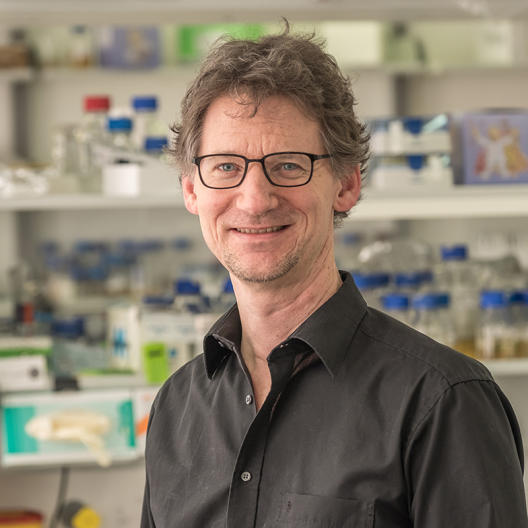“Research means solving riddles”

Prof. Wedlich-Söldner, what scientific topic are you working on right now?
There are highly dynamic processes taking place incessantly in cells, and these processes have to be precisely regulated and coordinated. At the Institute of Cell Dynamics and Imaging, my team and I are looking into how cells maintain such a tight organization. The current focus of our work is primarily on the organization of the plasma membrane – the envelope enclosing the cell – and on the cytoskeleton which, depending on requirements, gives shape to the cell or permits dynamic changes. To look at cellular processes, we use, among others, simple model systems such as baker’s yeast or bacteria, because they can easily be manipulated by genetic and molecular means. One important question we’re currently looking at is how cells behave when they have to process acute signals, such as when their environment suddenly changes or they are exposed to stress. In such cases, cells often adapt by reorganizing their plasma membrane with the aid of the cytoskeleton within a few minutes. In this process, fibres formed out of the protein actin play a particularly important role. They form a network on the inside of the plasma membrane that supports the cell. This and other fundamental cellular processes are what we would like to decipher in detail – not least because they play an important part during inflammation reactions or in the cell’s defence against certain pathogens.
What characterizes you personally as a scientist?
I love puzzles, and doing research is basically nothing other than solving riddles. I also have a propensity for abstract thinking. I just enjoy developing theories. The problem of course is that you then have to prove these ideas – which is not always terribly easy to do. When it does succeed, though, it’s a sheer gain in knowledge which may even lead to new ideas. What drives me personally in my research is the prospect of discovering fundamental biological laws – in other words, interactions between components, molecules or individual cells which then organize themselves into tissue.
What is your greatest aim as a scientist?
The organization of cells is the basis of all life. I hope we can succeed in deciphering a few of its mechanisms. These discoveries then make it possible to influence the behaviour of cells in such a way that they display enhanced properties, or even entirely new ones. For example: certain molecules in the plasma membrane are responsible for producing energy in cells. We would like to anchor them at another place in order to increase the yield of the cell. In other words, the same amount of sugar would provide more energy, which would be of great interest for biotechnologists.
What’s your favourite research toy – and what is it able to do?
That’s easy to answer: light microscopy. Currently we have several microscopes that specialize in different applications. They enable us to observe living cells and watch processes in real time, although it’s not that easy to get just the right “snapshots” and make meaningful films. Processing and evaluating these images takes a lot of time, but luckily the fascination and the pleasure I take from doing this work remain undiminished to date. In fact, they tend to increase with the progress being made in microscopy technology.
Can you remember your happiest moment as a scientist?
I’m not sure that I would talk about “happy moments”. What successful research means for me is rather that you come closer and closer to your aim, step by step and usually over a long period of time, so that you develop a concept which you can then prove in the end. Eureka moments are something I don’t have very often. What I do have, though, is a feeling of profound satisfaction because I find my work so fulfilling and there’s no end to the fascinating questions. Naturally, there have been, and there still are, specific successes – especially when new, surprising observations lead to new ideas and concepts, which can then even be confirmed.
And what was your biggest frustration?
The path from an idea to its proof is paved with many moments of frustration, because of course things never run smoothly. One rule that certainly applies not only to research is that you should try to find something positive in such setbacks. One of our greatest publications, for example, would not have been so successful if another group of researchers had not published similar results before us. This forced us to go one step further than we had planned to, but ultimately it made our story much more exciting.
Which scientific phenomenon still regularly fascinates you today?
The coordinated chaos in a cell will probably never stop fascinating me. Think of it as a large construction site: at first, everything seems to be chaotic because the order behind the processes is not revealed at first glance. It requires an effort to understand what’s actually happening. If we transfer this idea to cells, it means that they have very specific forms and behaviours – but these still change in intervals of milliseconds. There are hardly any unchanging structures – but nevertheless, cells remain largely predictable.
How much artistry, creativity and craftsmanship is there in your scientific work?
I would describe microscopy as craftsmanship. Probably anyone could learn how to use the equipment in a day. But that’s not enough, because the data then have to be interpreted, which takes years. This is where craftsmanship crosses over into the realm of artistry. Experience, a good eye, and intuition are the important requirements for creating something new. And this ultimately allows a researcher to feel – just a little bit – like an artist.

